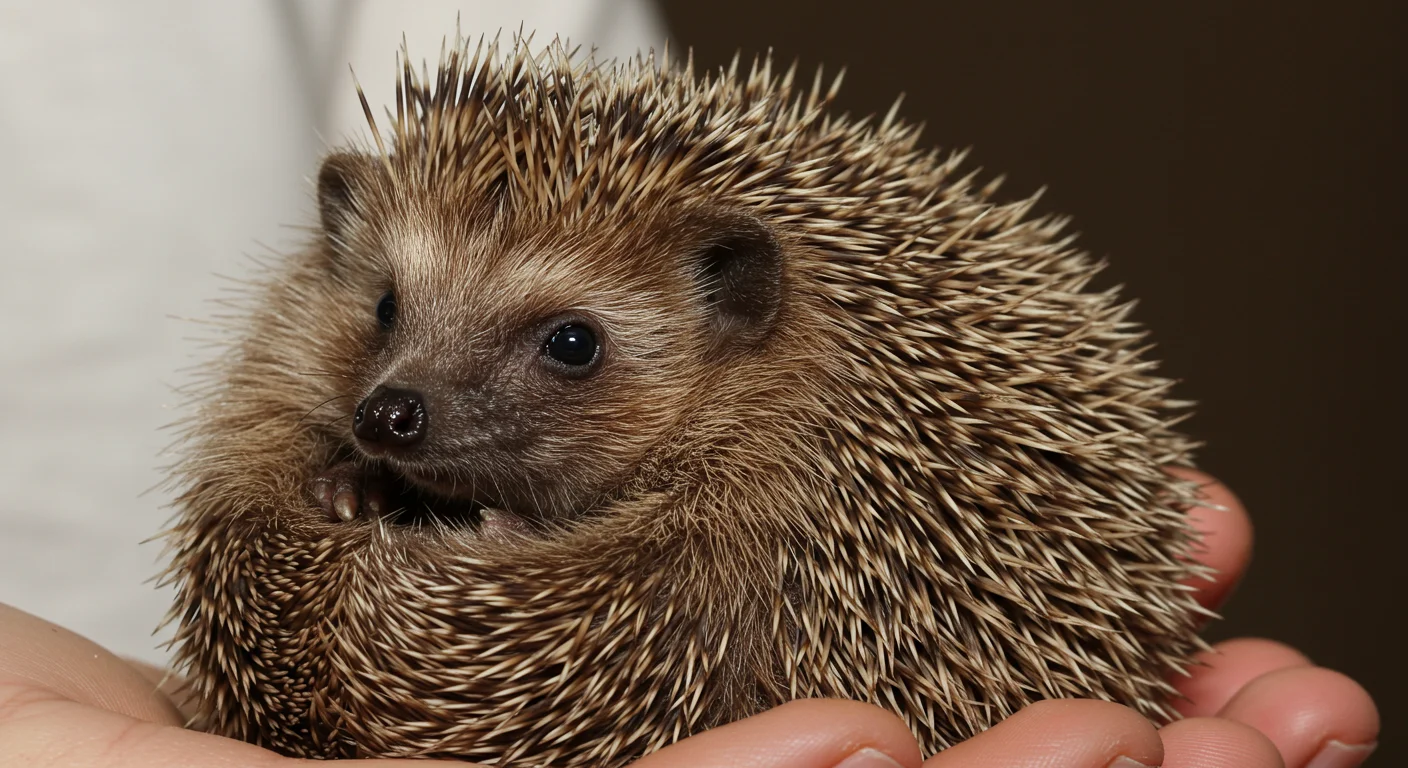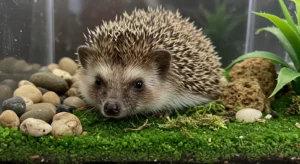Hedgehog Grooming
Hedgehog Nail Care: How to Trim Those Tiny Claws
Like many pets, hedgehogs’ nails grow continuously. In the wild, their digging and constant movement naturally wear down their claws. In captivity, however, nails can become overgrown if not trimmed regularly. Overly long nails can cause discomfort, get snagged on bedding or cage items leading to injury, curl into the footpad causing pain and infection, and affect their ability to walk properly. Learning how to trim your hedgehog’s nails safely is an essential part of their routine care.
Why Trim Hedgehog Nails?
- Prevent Injury: Long nails easily catch on fleece liners, wheels, or toys, potentially tearing the nail or injuring the toe.
- Avoid Impaction: Severely overgrown nails can curl under and grow into the delicate footpad, causing pain, infection, and difficulty walking.
- Maintain Mobility: Correct nail length allows for proper foot posture and comfortable movement.
- Handler Comfort: Sharp, long nails can be uncomfortable for the owner during handling.
Regular nail trimming is a fundamental aspect of basic hedgehog grooming and hygiene.
Gathering Your Supplies
Have everything ready before you start:
- Nail Clippers: Small, sharp clippers designed for cats or small animals work best. Human nail clippers can sometimes crush the nail. Ensure they are sharp to make a clean cut.
- Styptic Powder (e.g., Kwik Stop): Absolutely essential in case you accidentally cut the quick (the blood vessel inside the nail). Cornstarch can be used in a pinch but is less effective.
- Good Lighting: A well-lit area is crucial for seeing the quick. A headlamp can be helpful.
- Towel or Fleece Blanket: For comfortable handling and potentially helping to restrain a wiggly hedgehog.
- Magnifying Glass (Optional): Can help visualize the quick, especially on dark nails.
- Treats (Optional): For rewarding calm behavior afterward.

Preparation and Handling
Choose a time when your hedgehog is relatively calm, perhaps after waking up but before becoming too active.
- Find a Comfortable Position: Sit comfortably where you have good lighting and can hold your hedgehog securely.
- Secure Hold: Gently but firmly hold your hedgehog. Methods include:
- Holding them on their back in your palm (many will instinctively curl).
- Holding them upright against your chest.
- Letting them stand on a surface while gently lifting one foot at a time.
- The “cliff hanger”: Letting them cling to the edge of your hand or a towel, causing their legs to dangle (use with caution and support).
- Accustom to Foot Handling: Regularly touching your hedgehog’s feet gently during normal handling sessions can make nail trimming less stressful over time. Good hedgehog handling practice includes foot desensitization.
The Trimming Process
- Isolate a Nail: Gently extend one toe to isolate the nail you intend to trim.
- Identify the Quick: Look for the pinkish blood vessel running partway down the nail. It’s easier to see on light-colored nails. On dark nails, it’s very difficult; be extra cautious and trim only the very tip. **Your goal is to cut the clear/white tip *beyond* the quick.**
- Clip Quickly and Confidently: Trim only a small amount off the tip, especially if you’re unsure where the quick ends. It’s better to trim too little than too much. Use a single, decisive snip.
- Repeat for Each Nail: Proceed calmly through all the nails you can access easily. You may need to do front and back feet in separate sessions if your hedgehog becomes stressed.
- Check Your Work: Ensure you haven’t left any sharp edges.
Tip: Sometimes giving the hedgehog a shallow, warm foot bath beforehand can soften the nails slightly and may help relax them.
Dealing with Bleeding (Cutting the Quick)
Even experienced owners occasionally cut the quick. Don’t panic:
- Apply Styptic Powder: Immediately press a pinch of styptic powder firmly onto the bleeding nail tip. Apply pressure for 15-30 seconds.
- Monitor: Ensure the bleeding stops completely. Keep the hedgehog on clean bedding to prevent infection.
- Reassess Technique: Note how far down you clipped and be more conservative on the remaining nails and in future sessions.
Quick exposure can be painful, so offering a treat afterward might help lessen the negative association.

Managing a Reluctant Hedgehog
Many hedgehogs dislike having their feet touched or nails trimmed.
- Be Patient: Don’t force it all at once. Trim one or two nails per session if necessary.
- Use Distraction: Sometimes trimming while they are eating a favorite treat or exploring during supervised playtime can work.
- Towel Method: Gently wrap the hedgehog in a towel, exposing only one foot at a time.
- Two-Person Job: One person holds the hedgehog securely while the other trims.
- Veterinarian/Groomer: If you are genuinely unable to trim the nails safely, seek help from an experienced exotic pet veterinarian or a groomer comfortable with hedgehogs. This is important for preventing health problems associated with overgrown nails.
Frequency of Trimming
Nail growth varies, but most hedgehogs need trims every **3-6 weeks**. Check their nails regularly. If you hear clicking sounds when they walk on hard surfaces, or if the nails look noticeably long or are starting to curl, it’s time for a trim.
Conclusion: Patience and Practice
Trimming your hedgehog’s nails can be intimidating at first, but it’s a necessary skill for responsible ownership. With patience, the right tools, good lighting, and practice, you can learn to do it safely and efficiently. Remember to stay calm, work in short sessions if needed, and always have styptic powder on hand. Regular nail care contributes significantly to your hedgehog’s comfort and overall health.
Nail trimming procedure adapted from standard practices for small animal grooming. Information on the quick and styptic powder use is common veterinary first aid knowledge.
















